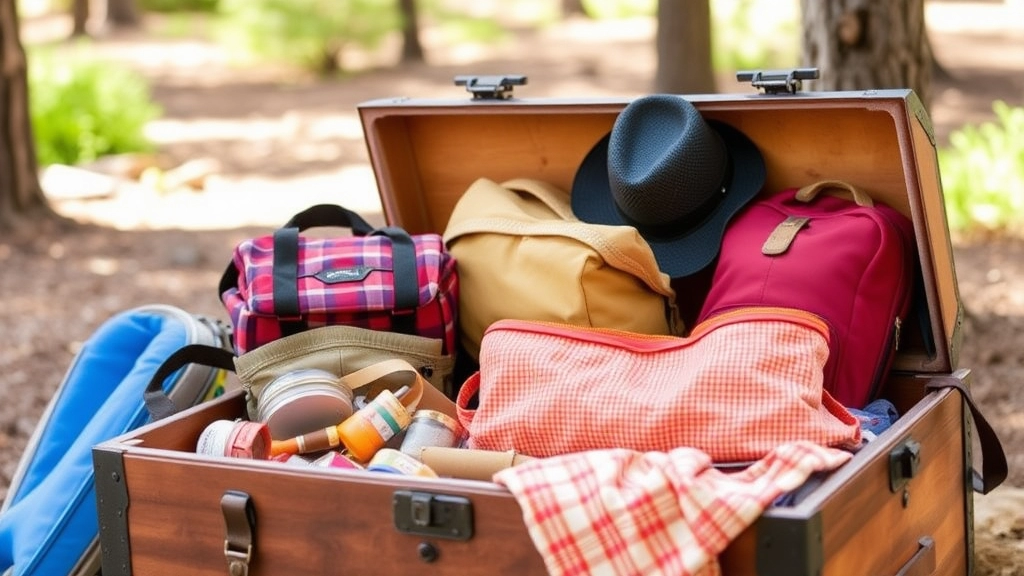Preparing for summer camp can be both exciting and overwhelming, especially when it comes to packing the perfect trunk. In this comprehensive guide, we’ll explore everything you need to ensure a smooth and enjoyable camp experience. From choosing between hard and soft trunks to packing essential clothing for all weather conditions, we’ve got you covered. We’ll also dive into must-have toiletries, bedding for comfort, and organizing tips to keep your trunk neat. Don’t forget the gadgets, footwear, first-aid essentials, and fun extras to make your camp experience unforgettable.
Choosing the right camp trunk is just the beginning. We’ll guide you through packing layers for unpredictable weather, selecting the right footwear for various activities, and ensuring you have all the necessary toiletries and personal hygiene items. Bedding and sleep essentials are crucial for a good night’s rest, and our organizing tips will help you keep everything in its place. We’ll also discuss electronics and gadgets allowed at camp, how to pack a first-aid kit, and the importance of labeling everything to avoid lost items. Ready to pack like a pro? Let’s get started!
Choosing the Right Camp Trunk: Hard vs. Soft
Alright, let’s get real. You’re gearing up for camp, and the big question hits you: Should I go for a hard trunk or a soft one? It’s a legit concern because the right choice can make your camp experience smooth or a total hassle. So, let’s break it down.
Why It Matters
First off, think about what you’re packing. A camp trunk isn’t just a box; it’s your mobile home for the next few weeks. You want something that’s going to keep your stuff safe, organised, and easy to access. Here’s a quick rundown of the pros and cons of each:
Hard Trunks
Pros:
- Durability: These things are built like tanks. They can take a beating, whether it’s from rough handling or the elements.
- Security: Most hard trunks come with locks or can be easily fitted with one. Perfect for keeping your gear safe.
- Stackable: If you’re sharing a cabin, hard trunks stack neatly, saving space.
Cons:
- Weight: They can be heavy, even before you fill them up.
- Bulkiness: Hard trunks aren’t exactly flexible. They take up a fixed amount of space, which can be a downside in tight quarters.
Soft Trunks
Pros:
- Flexibility: Soft trunks can squish into tight spots, making them great for cramped cabins.
- Lightweight: Easier to carry around, especially if you’re trekking to your campsite.
- Pockets and Compartments: Many come with multiple pockets, making organisation a breeze.
Cons:
- Less Protection: They’re not as sturdy, so your stuff might get squished or damaged.
- Security: Not as secure as hard trunks. Zippers can be a weak point.
Real Talk: What Do You Need?
Think about your camp’s environment and what you’ll be doing. If you’re heading to a place with rough terrain or unpredictable weather, a hard trunk might be your best bet. But if you’re going somewhere more laid-back, a soft trunk could be just the ticket.
Here’s a quick checklist to help you decide:
- Weather: Will it be wet or dry? Cold or hot?
- Activities: Are you doing rugged activities or more relaxed ones?
- Transport: How far will you need to carry your trunk?
- Space: How much room will you have in your cabin or tent?
Personal Experience
When I went to camp last summer, I opted for a hard trunk. It was a bit of a pain to lug around, but I never worried about my stuff getting damaged. My mate, on the other hand, went with a soft trunk. He loved the extra pockets and the fact that it was lighter, but he did have a few issues with security.
Final Thoughts
Choosing between a hard and soft camp trunk boils down to your specific needs and preferences. Consider your camp environment, activities, and how you’ll transport your gear. Both have their merits, but the right choice will make your camp experience a whole lot better.
If you’re still unsure about what to pack, check out our Ultimate Packing Guide for summer camp. And for those looking for a balanced schedule to make the most out of your camp experience, our Balanced Summer Camp Schedule Ideas can be a great resource.
So, what’s it going to be? Hard or soft? Either way, make sure it’s something that’ll keep your gear safe and your mind at ease. Happy camping!
Essential Clothing for All Weather Conditions
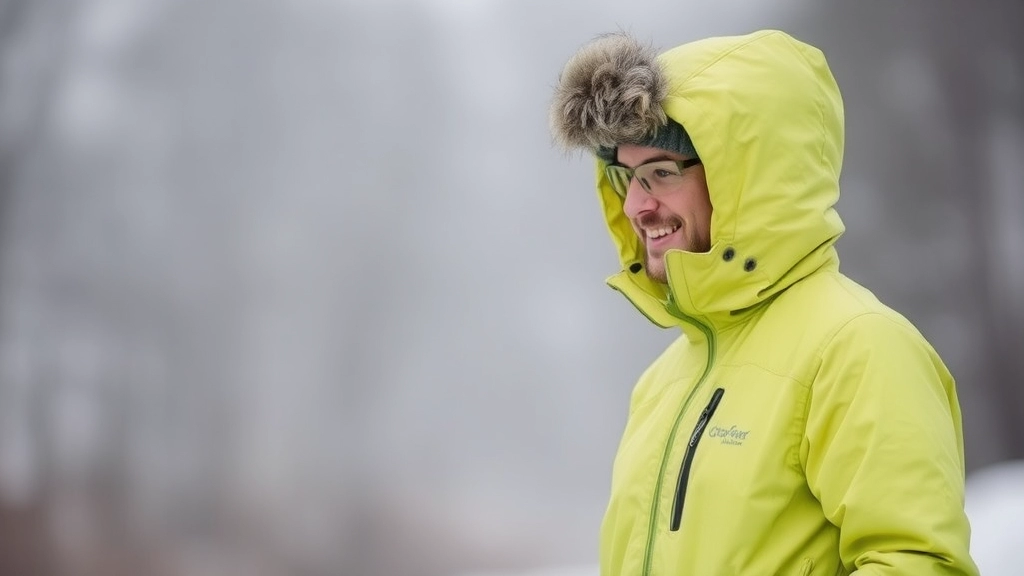
Ever been caught in a downpour without a jacket? Or shivering because you underestimated how cold it would get at night? Let’s avoid that.
What to Pack
Layering is Key
You need to prepare for all kinds of weather. Think layers.
- Base Layer: Moisture-wicking shirts and leggings. Keeps sweat off your skin.
- Mid Layer: Fleece or wool. Traps heat.
- Outer Layer: Waterproof jacket. Keeps you dry.
Versatile Clothing
Pack items that can multitask.
- Convertible trousers: Zip-off legs for when it gets hot.
- Hoodies: Warm and comfy.
- Quick-dry shorts: Great for swimming or hiking.
Footwear
Don’t skimp on this.
- Hiking boots: Sturdy and waterproof.
- Sandals: For those lazy days.
- Trainers: Lightweight and breathable.
Real Talk: Weather Changes Fast
One minute it’s sunny, the next it’s pouring. Be ready.
Rain Gear
- Poncho: Lightweight and easy to pack.
- Waterproof trousers: Keeps you dry during heavy rain.
Cold Weather
- Beanie: Keeps your head warm.
- Gloves: Don’t let your fingers freeze.
Hot Weather
- Sun hat: Protects you from the sun.
- Sunglasses: Shield your eyes.
Packing Tips
Roll, Don’t Fold
Rolling saves space and reduces wrinkles.
Packing Cubes
Organise your stuff. Easy to find what you need.
Label Everything
Trust me, you don’t want to lose your favourite hoodie.
Real-World Example
Remember that time at camp when Sarah forgot her waterproof jacket? She was soaked and miserable. Don’t be Sarah.
Quick Checklist
- Base layers
- Mid layers
- Outer layers
- Convertible trousers
- Hoodies
- Quick-dry shorts
- Hiking boots
- Sandals
- Trainers
- Poncho
- Waterproof trousers
- Beanie
- Gloves
- Sun hat
- Sunglasses
Toiletries and Personal Hygiene Must-Haves
Alright, let’s dive into something we all worry about when packing for camp: toiletries and personal hygiene. Ever wondered if you’ve packed enough toothpaste or if you’ll end up sharing soap with a stranger? Let’s make sure you’ve got everything you need to stay fresh and clean without any embarrassing moments.
The Basics: What You Really Need
First things first, let’s cover the essentials. These are the must-haves you can’t skip:
- Toothbrush & Toothpaste: No one wants to be the person with bad breath. Pack a toothbrush cover to keep it clean.
- Soap or Body Wash: Go for a travel-sized option if space is tight.
- Shampoo & Conditioner: Choose a 2-in-1 if you’re looking to save space.
- Deodorant: This is non-negotiable. Trust me, you’ll thank yourself.
- Razor & Shaving Cream: If you shave, don’t forget these.
- Towels: Quick-dry towels are a game-changer. They’re compact and dry fast.
Special Considerations: Tailoring to Your Needs
Everyone’s got their own quirks and needs. Here are a few extras you might consider:
- Skin Care Products: If you’re prone to acne or have sensitive skin, pack your usual skincare routine.
- Feminine Hygiene Products: Ladies, don’t forget tampons or pads. It’s better to have them and not need them.
- Contact Lens Solution & Case: If you wear contacts, this is crucial.
- Hand Sanitiser: Campsites can be dirty. A small bottle can be a lifesaver.
Keeping It Organised: Storage Solutions
You don’t want to be that person digging through a messy bag to find your toothbrush. Here’s how to keep things tidy:
- Toiletry Bag: A hanging toiletry bag is super handy. It keeps everything in one place and can hang in the shower for easy access.
- Small Containers: Use small, reusable containers for shampoos and lotions. They save space and keep you organised.
Real Talk: Stories from the Camp
I remember one summer, a mate of mine forgot his deodorant. By day three, no one wanted to sit next to him at meals. Don’t be that guy. Another friend packed a bar of soap but no soap dish. It got all mushy and gross. Lesson learned: pack smart, pack right.
Quick Recap: Your Checklist
Here’s your quick checklist to make sure you’ve got it all:
- Toothbrush & Toothpaste
- Soap or Body Wash
- Shampoo & Conditioner
- Deodorant
- Razor & Shaving Cream
- Towels
- Skin Care Products
- Feminine Hygiene Products
- Contact Lens Solution & Case
- Hand Sanitiser
- Toiletry Bag
- Small Containers
For more tips on ensuring a safe and enjoyable camp experience, check out our guide on cabin bunk safety and design tips. And if you’re a counselor, don’t miss our packing list essentials to make your camp experience smooth and hassle-free.
Bedding and Sleep Essentials for Comfort
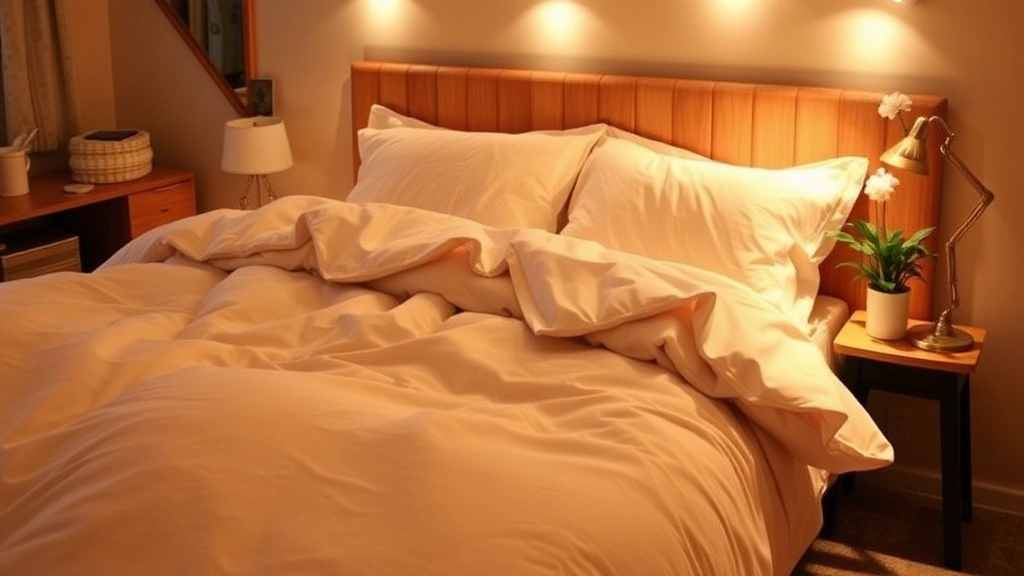
Alright, let’s talk about bedding and sleep essentials.
Ever tried sleeping on a thin, lumpy mattress after a long day of activities? Not fun.
Here’s how to make sure your kid is comfy and well-rested at camp.
Sleeping Bag or Sheets?
First up, sleeping bags.
- Warmth: They’re great for colder nights.
- Convenience: Easy to roll up and pack away.
But if your child prefers something more like home, sheets and a blanket might be the way to go.
Mattress Pads and Air Mattresses
No one wants to sleep on a hard surface.
Consider these options:
- Foam Pads: Lightweight and easy to carry.
- Air Mattresses: More comfortable but requires a pump.
Pillows
A good pillow can make a world of difference.
- Travel Pillows: Compact and easy to pack.
- Regular Pillows: More comfort, but bulkier.
Extra Blankets
Even in summer, nights can get chilly.
- Fleece Blankets: Lightweight yet warm.
- Thermal Blankets: Compact and super warm.
Personal Touches
Adding some personal touches can make camp feel a bit more like home.
- Favourite Teddy or Comfort Item: Helps with homesickness.
- Decorative Pillowcases: Adds a bit of fun and personality.
Keeping It All Organised
Use packing cubes or compression bags to keep everything neat and tidy.
- Packing Cubes: Great for separating bedding from clothes.
- Compression Bags: Save space and keep things dry.
Real Talk
When I was a kid, I remember bringing my favourite blanket to camp.
It made all the difference on those cold nights.
Bedding and sleep essentials are not just about comfort; they’re about making sure your child gets the rest they need to enjoy every moment of camp.
Organising Tips: Packing Cubes and Storage Solutions
Ever found yourself rummaging through a chaotic camp trunk, desperately searching for that one pair of socks? Yeah, me too. Packing for camp can feel like preparing for a small expedition, and keeping everything organised is key to a smooth experience. So, how do you keep your gear in check and your sanity intact? Let’s dive into some practical tips on using packing cubes and storage solutions.
Why Packing Cubes are a Game Changer
Packing cubes. If you haven’t heard of these, you’re in for a treat. They’re like Tetris blocks for your luggage, and they make a world of difference. Here’s why:
- Compartmentalisation: Separate your clothing by type â shirts in one cube, trousers in another. This makes it super easy to find what you need without turning your trunk into a tornado.
- Space-Saving: These cubes compress your clothes, giving you more room for other essentials.
- Quick Access: Need your swim gear in a hurry? Just grab the cube with your swimwear instead of digging through everything.
Storage Solutions for the Win
Now, let’s talk about other storage solutions. You don’t have to stop at packing cubes. There are plenty of nifty items that can keep your camp trunk neat and tidy.
- Ziplock Bags: Perfect for toiletries, snacks, or anything that might leak. Plus, they’re transparent, so you can see what’s inside at a glance.
- Mesh Bags: Great for dirty laundry. They allow your clothes to breathe and keep them separate from the clean stuff.
- Hanging Organisers: If your camp allows it, these can be a lifesaver. Hang them up in your tent or cabin to keep smaller items like socks, underwear, and accessories in order.
Real Talk: What Works and What Doesn’t
I remember my first camp trip. I tossed everything into my trunk willy-nilly, thinking I’d sort it out later. Spoiler alert: I didn’t. It was a mess, and I spent more time looking for stuff than enjoying camp activities.
Fast forward to my next trip, and I’d discovered packing cubes. I was sceptical at first â how much difference could a few fabric squares make? But let me tell you, it was like night and day. Everything had its place, and I could actually find what I needed. No more frantic searches for my torch in the middle of the night.
Keep It Real with these Packing Tips
- Label Everything: Even within your packing cubes, labels can save you time.
- Roll, Don’t Fold: Rolling your clothes can save space and reduce wrinkles.
- Prioritise: Pack the items you’ll need most frequently at the top of your trunk or in easily accessible cubes.
For more tips on making your camp experience enjoyable, check out our guide on camp activities and our comprehensive camp planning guide.
Electronics and Gadgets Allowed at Camp
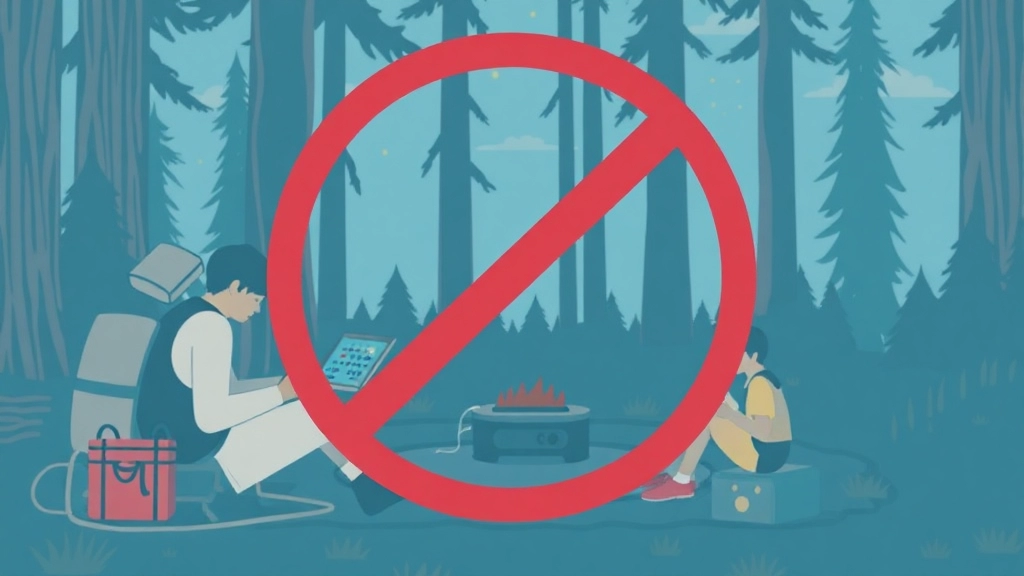
Let’s talk gadgets.
I know what you’re thinking: “Can I bring my phone?”
Well, it depends.
Most camps have strict rules about electronics.
But don’t worry, I’ve got you covered.
What Gadgets Can You Bring?
First off, check your camp’s rules.
Some camps allow basic electronics. Others? Not so much.
Here’s a quick list of commonly allowed gadgets:
- Flashlights (a must-have)
- Battery-powered fans (for those hot nights)
- Digital cameras (capture those memories)
- E-readers (if you’re a bookworm)
What About Phones and Tablets?
Most camps ban mobile phones and tablets.
Why?
They want you to unplug and enjoy nature.
But hey, that’s not a bad thing.
Tips for Managing Without Your Phone
Worried about being without your phone?
Here’s how to cope:
- Bring a journal: Jot down your thoughts and experiences.
- Use a disposable camera: Old school but fun.
- Carry a watch: Keep track of time the old-fashioned way.
How to Keep Your Gadgets Safe
Got gadgets?
Keep them safe with these tips:
- Label everything: Use waterproof labels.
- Store in ziplock bags: Protect from rain and dirt.
- Use a small lockbox: Keep valuables secure.
Real Talk: Do You Really Need Gadgets?
Think about it.
Camp is about disconnecting.
Enjoying nature.
Making new friends.
You might find you don’t miss your gadgets at all.
Footwear and Specialty Items for Activities
Alright, let’s talk about something crucial: footwear and specialty items for camp activities. If you’re anything like me, you want to make sure your feet are happy and ready for action. So, what exactly do you need to pack to keep those feet comfy and ready for anything camp throws your way?
The Right Footwear for Every Activity
First up, let’s tackle the footwear. It’s not just about packing any old pair of shoes. You’ve got to think about what you’ll be doing at camp. Here’s a quick breakdown:
- Hiking Boots: If your camp involves hiking, you need boots that offer good ankle support and a sturdy sole. Nothing ruins a hike faster than a twisted ankle or sore feet.
- Water Shoes: Got water activities on the agenda? Water shoes are a must. They dry quickly and protect your feet from sharp rocks and slippery surfaces.
- Trainers/Sneakers: For general activities like sports, running, or just hanging out, a good pair of trainers is essential. Make sure they’re broken in to avoid blisters.
- Sandals: Perfect for casual wear around the camp. Opt for ones with a good grip to avoid any slips.
Specialty Items Tailored to Camp Activities
Now, let’s dive into the specialty items. Camps can have a variety of activities, so it’s smart to be prepared for anything:
- Swim Goggles: If swimming is on the list, goggles are a game-changer. They make swimming more enjoyable and protect your eyes from chlorine or lake water.
- Climbing Gear: Some camps offer rock climbing or bouldering. If you’re into that, check if you need to bring your own gear like climbing shoes or a harness.
- Sports Equipment: Camps often have sports like tennis, football, or archery. While they usually provide equipment, if you have a favourite racket or bow, bring it along.
- Rain Gear: Don’t forget a rain jacket and waterproof boots. Camps don’t stop for rain, and neither should you.
Real-Life Example
Here’s a quick story: Last summer, my mate Jake forgot to pack his hiking boots for camp. He ended up borrowing a pair that were two sizes too big. Not only did he get blisters, but he also struggled with balance on the trails. Lesson learnedâproper footwear is non-negotiable.
For more tips on what to pack, check out our Summer Camp Packing List for Counselors. And if you’re curious about what activities might be on the schedule, take a look at our Summer Camp Daily Schedule.
First-Aid Kit and Medications to Pack
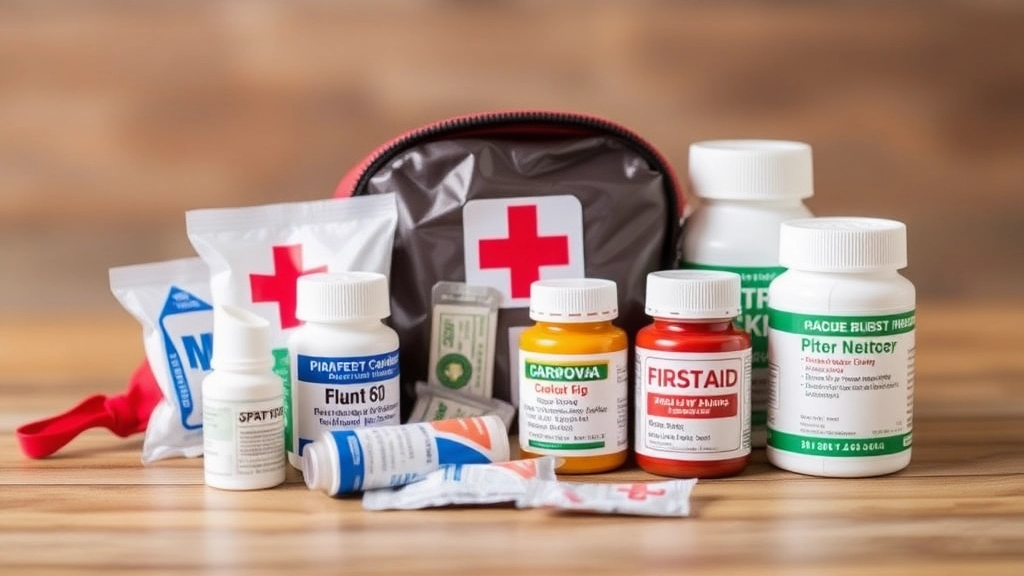
Ever worried about what to do if your kid gets a scrape or a headache at camp?
You’re not alone.
Packing a solid first-aid kit and essential medications can save the day.
Let’s break it down.
First-Aid Kit Essentials
First things first, you need the basics.
Here’s what I always pack:
- Plasters: Different sizes for different boo-boos.
- Antiseptic wipes: Clean those cuts and scrapes.
- Bandages: For sprains or larger wounds.
- Tweezers: Great for splinters and ticks.
- Scissors: Handy for cutting bandages or clothes in a pinch.
- Pain relievers: Think paracetamol or ibuprofen.
- Hydrocortisone cream: For insect bites and rashes.
Medications to Pack
If your child takes any regular medications, don’t forget them.
But also consider:
- Allergy meds: Antihistamines can be a lifesaver.
- Motion sickness tablets: For those long bus rides.
- Cold meds: Just in case they catch a bug.
Pro Tips for Packing Meds
- Label everything: Make sure each medication is clearly marked with your child’s name and dosage instructions.
- Talk to the camp nurse: Hand over a list of medications and any special instructions.
- Keep extras: Pack more than you think you’ll need. Better safe than sorry.
Real Talk
I remember when my son came back from camp with a bee sting.
He was fine, but having that hydrocortisone cream handy made a world of difference.
Final Thoughts
A well-packed first-aid kit and the right medications can make camp life smoother for everyone.
Don’t skimp on this—your future self will thank you.
For more tips on keeping your child prepared, check out our section on Toiletries and Personal Hygiene Must-Haves.
Labeling Everything: How to Keep Items from Getting Lost
Ever found yourself in a camp’s lost-and-found, sifting through a mountain of unclaimed items like a treasure hunter? Yeah, me too. It’s a nightmare. So, labeling everything is not just a good idea; it’s a survival tactic. Here’s how to make sure your stuff doesn’t become someone else’s lucky find.
Why Labeling Matters
Before we dive into the how-to, let’s talk about the why. Camps are a whirlwind of activities, and it’s easy for things to get misplaced. When your kid’s favourite hoodie or their brand-new water bottle goes missing, it can lead to unnecessary stress. Labeling everything ensures:
- Quick identification
- Less stress for everyone involved
- Fewer replacements needed
What to Label
You might be thinking, “What exactly should I label?” Short answer: everything. But let’s break it down:
- Clothing: Shirts, trousers, socks, underwear, jacketsâanything wearable.
- Toiletries: Toothbrush, comb, shampoo bottles.
- Bedding: Pillowcases, sheets, sleeping bags.
- Footwear: Shoes, sandals, boots.
- Electronics: Chargers, earphones (if allowed), flashlights.
- Miscellaneous: Books, games, personal items.
Best Labeling Methods
Now, let’s get into the nitty-gritty. How do you label everything effectively? Here are some tried-and-true methods:
- Iron-On Labels: Perfect for clothing. These are durable and withstand multiple washes.
- Stick-On Labels: Great for non-fabric items like water bottles and toiletries.
- Permanent Markers: Ideal for items that can’t be labeled with stickers or iron-ons. Just make sure to use a marker that won’t wash off easily.
- Sew-In Labels: For those who want a more permanent solution, especially for high-value items like jackets and sleeping bags.
Pro Tips for Labeling
- Use Full Names: First name and last name. Initials can be confusing.
- Include Contact Info: Adding a phone number or email can be a lifesaver.
- Label Inside and Out: For items like shoes and jackets, label both the inside and outside. It doubles your chances of getting them back.
- Waterproof Labels: For items that will get wet, like swim gear.
Real-Life Example
I remember one summer camp where my son lost his favourite cap. It was a unique design, so I thought it would be easy to find. Nope. Turns out, another kid had the exact same cap. If I had labeled it, the mix-up would have been avoided, and my son wouldn’t have spent the rest of the camp without his lucky hat.
Fun Extras: Games, Books, and Non-Electronic Entertainment
Ever wondered how to keep the kids entertained at camp without relying on screens?
Yeah, me too.
It’s a real concern for many parents.
So, let’s dive into some fun extras that will keep the boredom at bay and make the camp experience unforgettable.
Games: The Ultimate Ice Breakers
Board games, card games, and even classic outdoor games can be lifesavers.
Think about:
- Uno: Simple, fast, and everyone knows it.
- Monopoly Deal: Quick and engaging.
- Frisbee: Perfect for some outdoor fun.
These games not only entertain but also help kids make new friends.
Books: Fuel for the Imagination
Books are a must.
They offer a quiet escape and keep the mind sharp.
Consider:
- Adventure Novels: Like “Harry Potter” or “Percy Jackson.”
- Comics: Easy to read and super engaging.
- Puzzle Books: Sudoku, crosswords, you name it.
Non-Electronic Entertainment: Old School but Gold
Remember the days before smartphones?
Let’s bring some of that magic back.
- Journals: Encourage kids to jot down their adventures.
- Sketch Pads: For the budding artists.
- Craft Kits: Simple DIY projects that can be done anywhere.
Why These Extras Matter
These extras aren’t just fillers.
They’re tools for socialising, learning, and unwinding.
Plus, they help kids disconnect from screens and connect with the world around them.
Real Stories, Real Fun
I remember my first camp.
No gadgets, just a deck of cards and a few good books.
Made lifelong friends over a game of Uno and found a love for reading that’s stayed with me.
Packing Tips for Fun Extras
- Keep it Light: No need to pack the entire board game collection.
- Durability: Choose items that can withstand a bit of rough handling.
- Variety: Mix it up to keep things interesting.
For more ideas on what to bring, check out our 1-week summer camp packing list essentials. If you’re looking for creative activities to include, our list of summer camp creative arts and crafts ideas is a great resource.
FAQs on Packing a Trunk for Summer Camp
What are the essential clothing items to pack for all weather conditions?
To be prepared for all weather conditions, pack in layers. Essential clothing includes:
- Base Layer: Moisture-wicking shirts and leggings.
- Mid Layer: Fleece or wool garments.
- Outer Layer: Waterproof jacket.
- Convertible trousers, hoodies, and quick-dry shorts are versatile options.
What type of footwear should I pack?
Footwear is crucial. Make sure to include:
- Hiking boots: Sturdy and waterproof.
- Sandals: For casual, lazy days.
- Trainers: Lightweight and breathable for daily activities.
How can I prepare for unpredictable weather changes?
Weather can change quickly. Be sure to pack:
- Poncho: Lightweight and easy to pack.
- Waterproof trousers: Essential for heavy rain.
- Beanie and gloves: For cold weather.
- Sun hat and sunglasses: For hot weather protection.
What are the bedding and sleep essentials for camp?
Comfort is key for a good night’s sleep. Consider packing:
- Sleeping Bag: Great for colder nights and easy to pack.
- Foam Pads or Air Mattresses: To avoid sleeping on hard surfaces.
- Pillows: Travel pillows for compactness or regular pillows for comfort.
- Extra blankets, such as fleece or thermal blankets, for chilly nights.
Are electronics and gadgets allowed at camp?
Most camps have strict rules about electronics. Commonly allowed gadgets include:
- Flashlights: A must-have.
- Battery-powered fans: For hot nights.
- Digital cameras: To capture memories.
- E-readers: If permitted and you enjoy reading.
Mobile phones and tablets are often banned to encourage unplugging and enjoying nature.
What should be included in a first-aid kit for camp?
A well-stocked first-aid kit is essential. Include:
- Plasters: Various sizes for different injuries.
- Antiseptic wipes: To clean cuts and scrapes.
- Bandages: For sprains or larger wounds.
- Tweezers and scissors: For splinter removal and cutting bandages.
- Pain relievers: Such as paracetamol or ibuprofen.
- Hydrocortisone cream: For insect bites and rashes.
How should medications be packed and managed?
If your child takes regular medications, pack them along with:
- Allergy meds: Antihistamines can be crucial.
- Motion sickness tablets: For long bus rides.
- Cold meds: Just in case.
Label each medication clearly with your child’s name and dosage instructions, and inform the camp nurse about any special instructions.
What are some packing tips to save space and stay organized?
To save space and keep organized, consider:
- Rolling clothes: Saves space and reduces wrinkles.
- Packing cubes: Helps organize and find items easily.
- Labeling everything: Prevents losing items.
References
-
Layering Basics: Expert Advice from REI
-
The Ultimate Guide to Layering for Outdoor Activities
-
Best Hiking Boots of 2024: Outdoor Gear Lab

